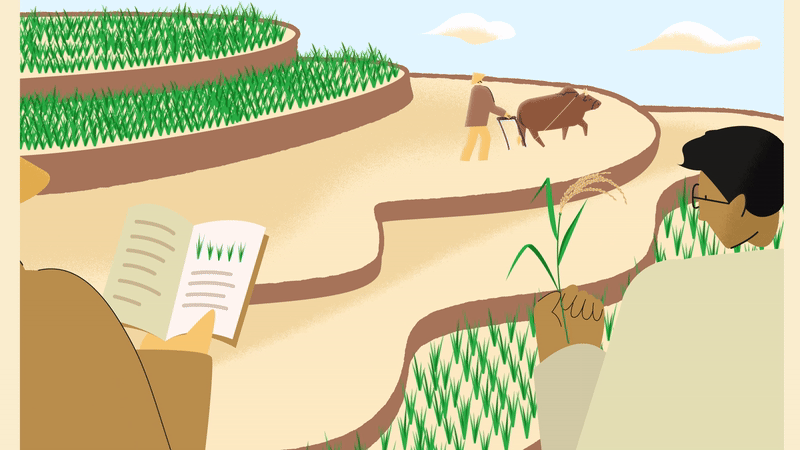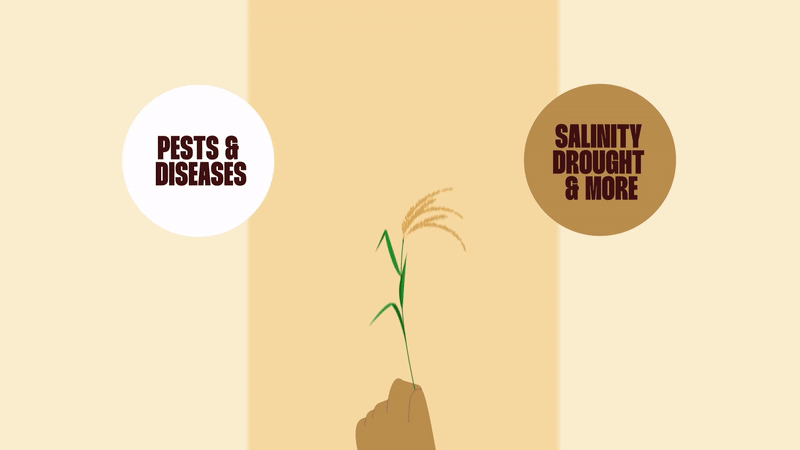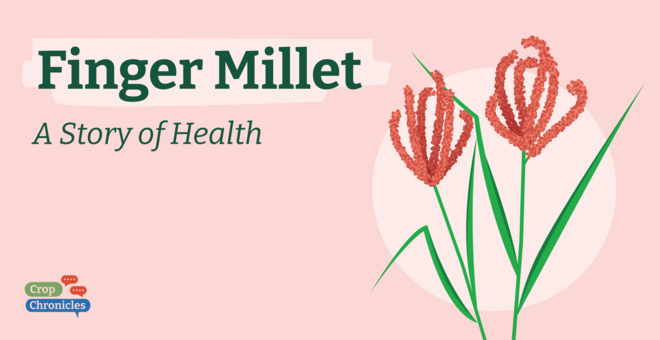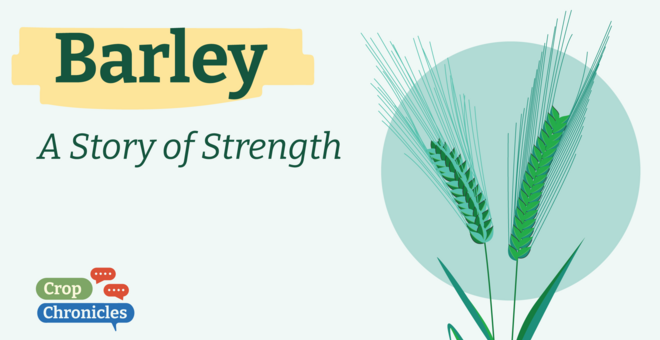CROP CHRONICLES: 6 Dec 2024
Plain, pale, and pedestrian – what could be more ordinary than rice? I suspect that’s how most people see me, a bland starchy sidekick to the main act. But my story, both ancient and ongoing, shows I am in fact the world’s most important food.
Every day, half the world’s population eats rice. Growing me has inspired incredible human ingenuity, from the dramatic rice terraces of Luzon in the Philippines – protected as the first UNESCO World Heritage landscape – to the clever irrigation systems of the Himalayas. In Nepal, farmers send icy spring water on long, winding paths so it can warm in the sun before reaching their rice fields at over 3,000 meters above sea level.
Scientifically, I’m known as Oryza sativa, or cultivated Asian rice, and I come in two main types: japonica and indica. I have an African relative, but more on that later. Japonica has short, sticky grains ideal for sushi and risotto, while indica has long, fluffy grains. For years, people believed we were separate species, domesticated independently in China and India. But most researchers now think my journey began around 9,000 years ago in the Yangtze River basin in China.
At first, people harvested wild plants from wetlands, including millets, water chestnuts, and my ancestor, O. rufipogon, or red-bearded rice. Over millennia, humans gradually transformed wild rice into me through careful selection. By 5,000 years ago, I had spread to the Yellow River valley. Soon after, I traveled east to Korea and Japan and west along trade routes to South and Southeast Asia.

Wherever I grew, wild rice species often grew nearby, and we exchanged genes. These crossings gave me useful traits, like the long, fluffy grains of indica varieties, which likely emerged in the northwest Indian subcontinent. Japonica varieties, meanwhile, evolved to thrive in different soil and water conditions, from flooded paddies to upland fields.
Not all my differences are visible. Fragrant rices like Basmati from India and Jasmine from Thailand may look and cook like indica, but their genes reveal they’re japonica. Fragrance comes from a mutation that allows a chemical called 2AP to accumulate. People are so attuned to it they can detect its scent in the field, in crushed leaves, or even in uncooked grains. This mutation has been nurtured in different places across Asia, showing how much people value aroma. Still, a mystery remains. Why do some cultures adore fragrant rice while others prefer me plain and neutral?
Asia isn’t my only family home. In West Africa, starting 10,000 years ago, people domesticated a wild rice called O. barthii into O. glaberrima, or African rice. Though less productive than me, African rice is remarkably resilient, tolerating heat, drought, pests, and diseases. It’s also more nutritious, as its harder-to-polish grains retain more protein and bran. While African rice is mainly grown for local use, breeders have crossed it with Asian types to create NERICA (New Rice for Africa) varieties. These combine Asian productivity with African toughness, doubling yields for smallholder farmers.
And then there’s South America. Long before Europeans arrived, people in the Amazon were harvesting wild rice. Archaeologists found grains at Monte Castelo, in what is now Brazil, that became larger around 4,000 years ago – a sign of domestication starting to happen. Sadly, European colonization ended this early cultivation, and that rice disappeared. But a wild relative, O. alta, still grows across South America. Scientists recently edited its genes to carry domestication traits like shorter plants, larger grains, and earlier flowering, creating a new South American rice.

Rice wild relatives, from red-bearded rice to tall South American rice, still hold incredible potential to make me better. They’ve contributed disease resistance, drought tolerance, and even higher yields to modern varieties. As the climate changes and new challenges arise, I’ll continue to draw on this diversity to adapt and thrive.
Plain and simple? Hardly. My story is one of survival, ingenuity, and resilience – proof that even a small grain can play a big role in the world.
Did You Know?
- Scientific names: Oryza sativa (Asian Rice), Oryza glaberrima (African Rice)
- Origin: Yangtze River Basin, ~ 9,000 years BP, Mid Niger Delta, ~3,000 years BP
- Global production: FAOSTAT (all rice): 165,250,620 ha, 787,293,867 tonnes
- Fun fact: Growing fragrant rice in paddies together with ducks increases the fragrance noticeably, apart from also managing pests and fertilising the rice.
The Great Wall of China is held together by mortar made from sticky rice and slaked lime (calcium hydroxide). This mortar is very adhesive and waterproof and prevents weeds from growing. It is said to be as strong as modern cement.
According to the Guinness World Records, the largest rice cake weighed 3.68 tonnes. It was made by Kwak Sungho and staff of Han Bbang (South Korea) at the 12th World Rice Food Festival in Dongjin-gun, Chungnam, South Korea on 7 October 2007. It measured 3.7 m (12 ft) in diameter. Anyone want to beat that?
Honda is written as 本田 in Japanese. The first character, 本 (hon), means “original” or “basis,” while the second, 田 (da), means “rice field” or “field.” Together, 本田 translates to “original rice field” or “source of the rice field”.
- Conservation of rice:
African Rice. 6,562 seed accessions in Genesys: 4,752 in the AfricaRice genebank, 1,667 in the International Rice Research Institute (IRRI) genebank, and 148 in the USDA National Small Grains Germplasm Research Facility in Nebraska, United States. Main donor countries are Liberia (1,514), Nigeria (1,500) and Ivory Coast (764). 5,652 accessions are safety duplicated at the Svalbard Global Seed Vault, 5,636 at the USDA National Center for Genetic Resources Preservation in Nebraska, United States, and 122 at the USDA National Seed Storage Laboratory, also in Nebraska.
Asian Rice. 259,146 accessions in Genesys: 126,973 in the IRRI genebank, 36,252 in the USDA Dale Bumpers National Rice Research Center in Arkansas, United States, and 20,668 at EMBRAPA genebank in Brazil. Main donor countries are the USA (35,012), India (19,085) and Brazil (15,981). 133,264 are safety duplicated at the Svalbard Global Seed Vault, 130,768 at the National Center for Genetic Resources Preservation, and 18,597 at USDA National Seed Storage Laboratory.
This story is part of Crop Chronicles, a multimedia campaign that uncovers the stories of the crops that feed the world, the people who grow them and the race to adapt them to a changing climate.




